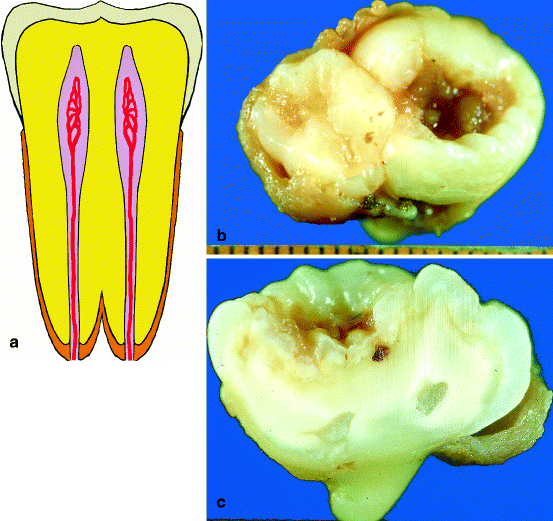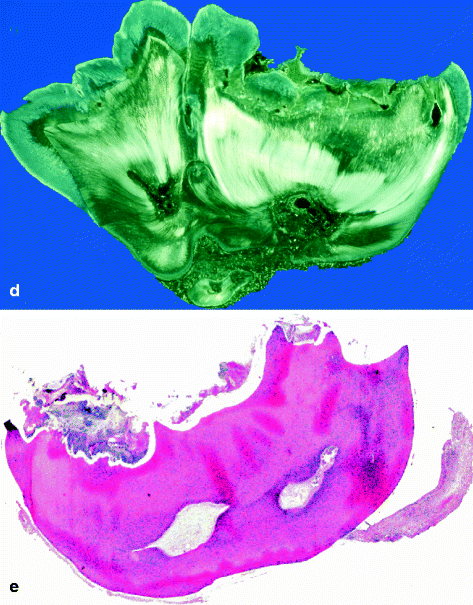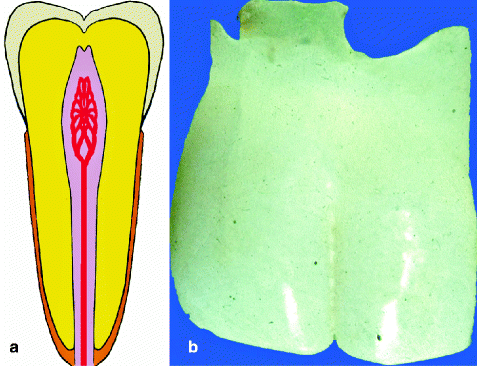(1)
Department of Pathology, Radboud University Nijmegen Medical Center, Nijmegen, The Netherlands
Abstract
Teeth may show an abnormal form due to malformations occurring during development or acquired after eruption into the oral cavity. The microscopic structure of the dental tissues usually is normal.
Disturbances Arising During Tooth Formation
Teeth may show an abnormal form due to malformations occurring during development or acquired after eruption into the oral cavity. The microscopic structure of the dental tissues usually is normal.
Fusion
In case of fusion, two adjacent teeth are connected with each other by either enamel and dentine both or, rarely, by enamel alone. The fusion may be complete over the full length of the teeth or only partial. The condition is due to the merging of two adjacent tooth germs. If the tooth germs touch each other after disappearing of the investing dental follicle, odontogenic soft tissues may unite to form a common matrix that subsequently mineralizes as usual (Fig. 4.1a–e). The number of teeth will be diminished by one in this condition, two normal teeth being replaced by one of abnormal appearance. Theoretically, the dentition can still have a normal teeth number when there is fusion of a tooth with a supernumerary counterpart. Occurrence of a separate dentin stalk projecting from the root surface and capped with enamel and having a common pulp chamber with the main tooth probably represents this type of fusion.




Fig. 4.1
Schematic drawing (a), gross appearance (b), cut surface (c), ground section (d) and decalcified section (e) of fusion. Two teeth are connected to each other at the level of the dentin, indicating contact between two teeth during their germ stage
Gemination and Twinning
Gemination occurs when there is partial development of two teeth from one single tooth germ. An abnormally formed tooth with usually one root canal is the outcome of this developmental fault (Fig. 4.2a, b). When the division is complete, the condition is called twinning. Then, the normal number of teeth is increased by one, the superfluous tooth usually being the mirror image of its adjacent counterpart. As already mentioned, the distinction between gemination and fusion is made by counting the number of teeth in the dentition. In case of fusion, their number is decreased by one as two teeth are replaced by one single abnormally formed fusion product. In case of gemination, the number is normal but one of the teeth being replaced by an abnormally formed one.


Fig. 4.2
Schematic drawing (a) and gross appearance (b) of gemination
Stay updated, free dental videos. Join our Telegram channel

VIDEdental - Online dental courses


